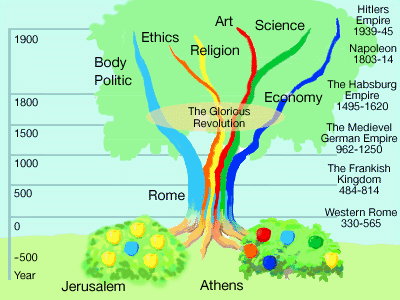About this lecture
Level: Senior undergraduate, graduate.
In the normal course of European history you learn about religion, trade, technology, kingdoms, empires, states, and nations. In this course we will not repeat this, but instead learn about the differentiation of institutional realms (here also called "cardinal institutions"). We will explore the unique path of social differentiation in Western Europe. The perspective is sociological rather than strictly historical.
In Part One of the lecture the stage is set by asking what is the unique about the European Civilization. We consider some answers given in the Third World and some answers given by contemporary Europeans. We then turn to the Mediterranean origins of European civilization in Athens, Rome and Jerusalem. Ancient Athenian democracy in treated in the perspective of what later (and without direct connection) happened with the European differentiation into institutional realms.
In Part Two of the lecture, the mainstream of the structuration of Western Europe is traced from the 'two swords', state and church, that structured western European society in the Middle Ages to the six semi-autonomous institutional realms - the economy, body politic, science, religion, ethics, and art - that are visible today. Each is dependent on a special type of freedom: civic liberties, free trade, academic freedom, religious toleration, the right to follow one's conscience, artistic license. Each maintain a large measure of independence (Weber's Eigengesetzlichkeit). Each institutional realm is also in same ways dependent on all the others (Durkheim's solidarité organique). The modern Europeans are by these arrangements offered the opportunity to create self-chosen biographies in their quest for wealth, order, truth, salvation, virtue, and beauty. The resulting form of European structration seems closer to the model of ancient Athens than that of the Roman Empire.

Click on the color code below to go to discussions of the different institutional realms that gain relative independence from one another in the West European development.
In Part Three of the lecture we pause to look at some implications of this differentiation process at special historical junctures: the West European empires, the emergence of the Latin American and North American societies, the post-Communist Central and Eastern Europe, and the prospects for the European Union.
Hans L Zetterberg, Professor of Sociology, has created this lecture. You may check his curriculum vitae by clicking on his name.
There is no text book; all reading and viewing material is found on the Web.
Copyright © 1996 Hans L Zetterberg and City University in Stockholm.